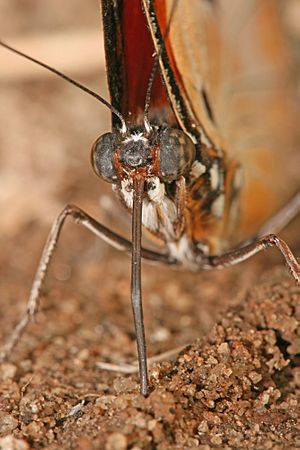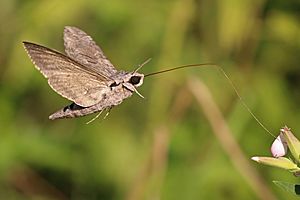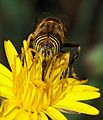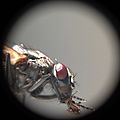Proboscis facts for kids
A proboscis is a long, tube-like part that sticks out from an animal's face. It's like an extended nose or mouth. Animals use their proboscis for different things, especially for feeding.
Contents
What is a Proboscis?
The word "proboscis" comes from a Greek word meaning "to feed." It describes a special body part that helps animals eat, smell, or even grab things. You can find a proboscis on many different kinds of animals, from tiny insects to large mammals.
Proboscis in Vertebrates
Vertebrate animals are those with a backbone, like humans, elephants, and fish. In these animals, a proboscis is usually a long nose or snout.
Elephant Trunks
The most famous example is the elephant's trunk. This amazing proboscis is actually a long nose and upper lip combined. Elephants use their trunks for many tasks:
- Breathing and smelling: Just like a regular nose.
- Drinking: They suck up water and spray it into their mouths.
- Grabbing: They can pick up tiny leaves or heavy logs.
- Touching: It's very sensitive and helps them explore their world.
- Communicating: They use it to greet other elephants.
Other Vertebrate Examples
Some other vertebrates also have a proboscis-like snout. The tapir, for example, has a short, flexible snout that it uses to grab leaves and fruit. The Star-nosed mole has a unique, star-shaped nose with many sensitive feelers that help it find food underground.
Proboscis in Invertebrates
Invertebrate animals are those without a backbone, like insects, spiders, and worms. In these animals, the proboscis is usually a special mouthpart used for feeding.
Butterfly and Moth Proboscis
Butterflies and moths have a long, coiled proboscis that looks like a tiny straw. When they are not using it, they keep it curled up like a spring. When they want to eat, they unroll it and stick it deep into flowers to suck up nectar. This type of proboscis is called a siphoning proboscis because it works like a siphon, drawing liquid up.
Fly Proboscis

Different types of flies have different kinds of proboscises:
- House flies have a soft, spongy proboscis. They spit out digestive juices onto their food, then use their proboscis to soak up the liquid. This is called a sponging proboscis.
- Mosquitoes and some other biting flies have a sharp, needle-like proboscis. This is a piercing-sucking proboscis that they use to pierce skin and suck blood or plant juices.
Other Invertebrate Examples
Some marine worms, like polychaetes, can push out a part of their throat, which acts like a proboscis. They use it to grab food or burrow into the sand.
Images for kids
-
A syrphid fly using its proboscis to reach the nectar of a flower
See also
 In Spanish: Probóscide para niños
In Spanish: Probóscide para niños







